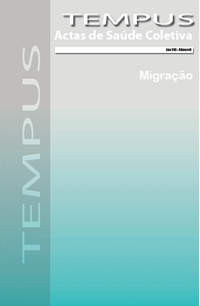Abstract
It is an integrative review, with a qualitative approach, with a historical focus between 2008 and 2018, which aims to understand the nature of migration policies adopted in the European context and to identify to what extent they have a protective character to migrants. With this, the aim is to apprehend the theoretical and political perspectives in force and to subsidize the construction of strategies capable of guaranteeing the human rights of migrants. The databases adopted were: ERIC, PubMed, Dianet, Springlink and Scopus. Only articles in Portuguese, English and Spanish were included for reading. The sample consisted of 17 articles. Studies have shown that the creation of policies that regulate labor migration is the major focus of interest for countries, since it establishes selection mechanisms favorable to domestic labor markets, with a tendency to absorb: a) “brains” - labor highly qualified - and b) cheap labor, incorporated in domestic services and civil construction. Regarding migration control policies, the legislation found refers mainly to the adoption of strategies to restrict “unwanted” flows, detention and expulsion of migrants, as well as the use of ICTs for identification and control of borders. In relation to asylum policies, it is noted that all of them had a protective character, signaling that, in terms of refuge, there seems to be greater protection compared to economic migration. Finally, the results show paradoxical dynamics, given that the European Union has a tendency to elaborate punitive policies while countries in isolation are more likely to protect migrants and guarantee human rights.
A Tempus garante critérios rigorosos, por meio de avaliação sistemática. Os autores se responsabilizam pela veracidade e ineditismo do trabalho cabendo a eles a cessão de direitos de publicação à revista. A confiabilidade dos conteúdos e a marca própria de apresentação tem como objetivo uma comunicação personalizada, adaptada aos padrões da revista, na medida em que adota critérios de excelência exigidos por seus usuários e especialistas, considerando os rigores da comunicação científica. Os autores devem especificar sua contribuição individual na concepção, delineamento, execução do trabalho, análise ou interpretação dos dados, redação e aprovação final do manuscrito. Incluir Fontes de financiamento e de apoio logístico das pesquisas. Ao final da submissão do artigo, os autores devem enviar uma declaração de cessão de direitos de publicação à Revista TEMPUS , assinada e no formato PDF (Portable Document Format ): Modelo da declaração de cessão de direitos.
